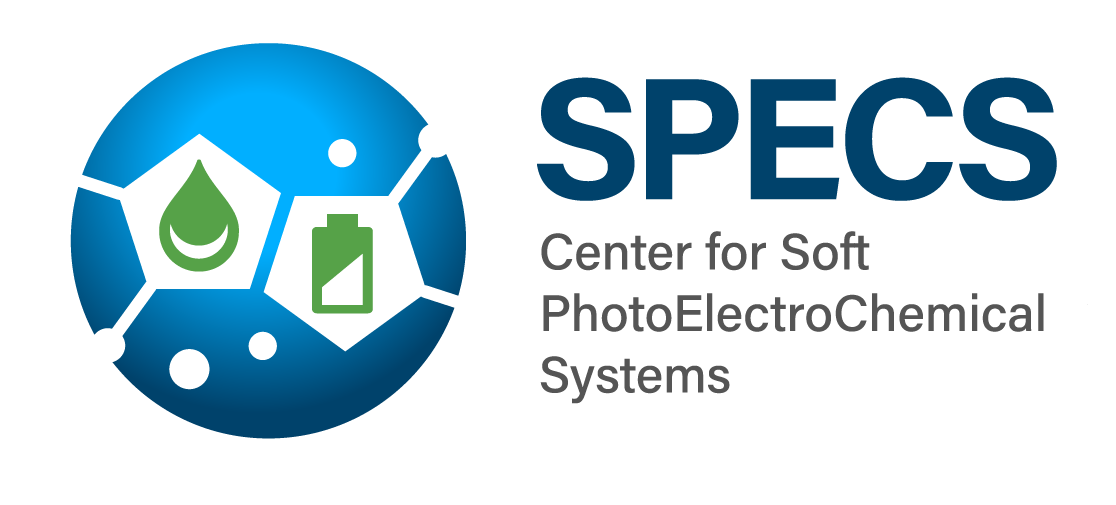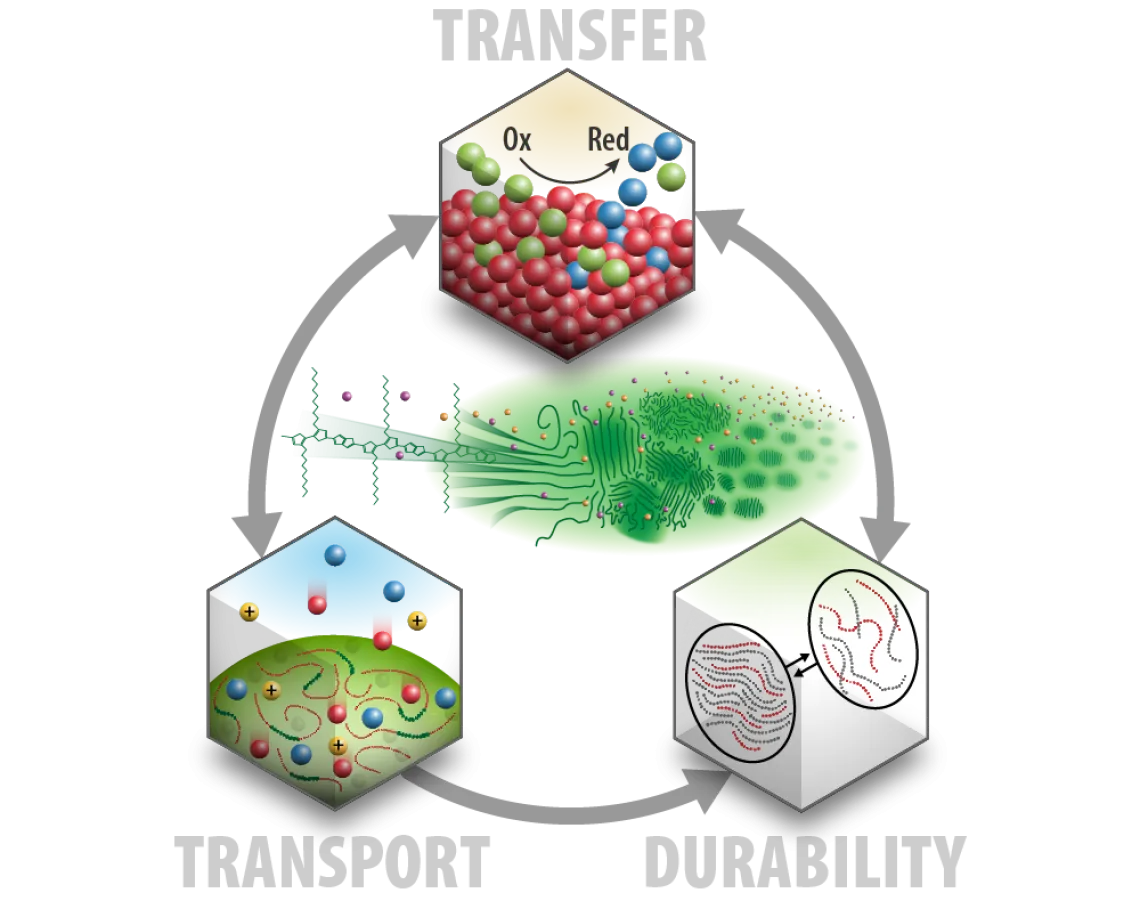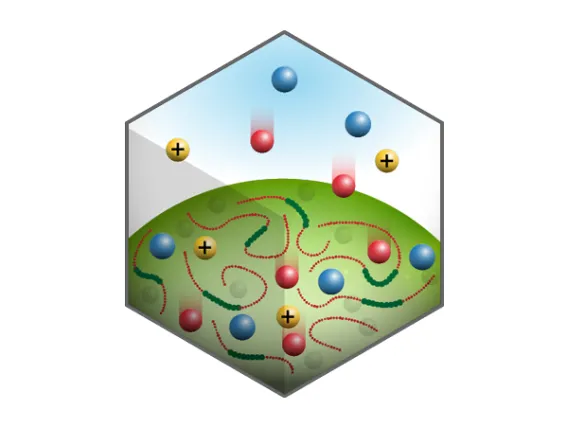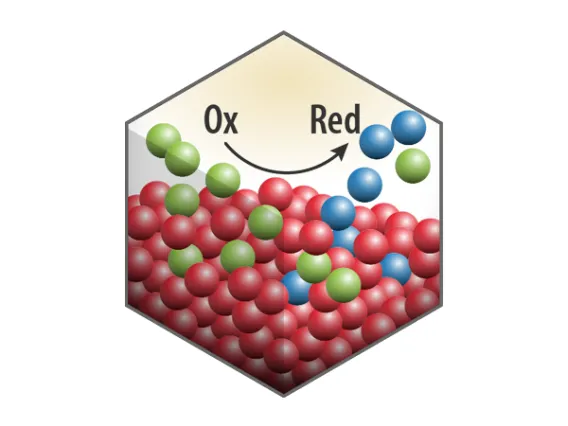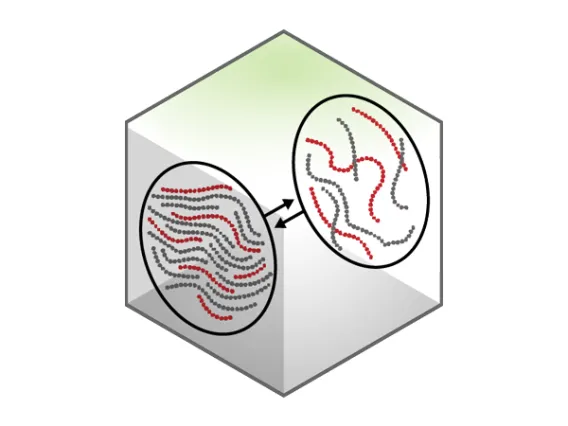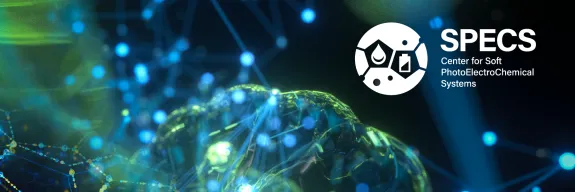
The SPECS vision is to use low-cost, highly scalable, durable polymer (plastic) materials for energy conversion and storage technologies to help achieve the renewable energy goals of the U.S. by 2050.
SPECS’ mission is to understand the factors controlling charge and matter transport processes that underpin emerging energy conversion (i.e. catalysis) and energy storage technologies at conductive polymer/electrolyte interfaces across spatiotemporal scales to guide durable soft material development and optimization.
U.S. Department of Energy award DE-SC0023411
Why conducting polymer (plastic) materials?
Pi-conjugated polymers are low cost, easily scalable and printable semiconductors that can absorb light, transport fundamental charges of electricity (holes and electrons) and store energy or enable energy storage through the formation of fuels such as hydrogen (H2). Such materials provide control over local environments afforded through synthesis, long-lived charge carrier lifetimes, and flexible, low-cost, and scalable thin film formats which circumvent the shortcomings of inorganic materials (surface states, grain boundaries, challenges in processing, and mechanically unstable platforms).

